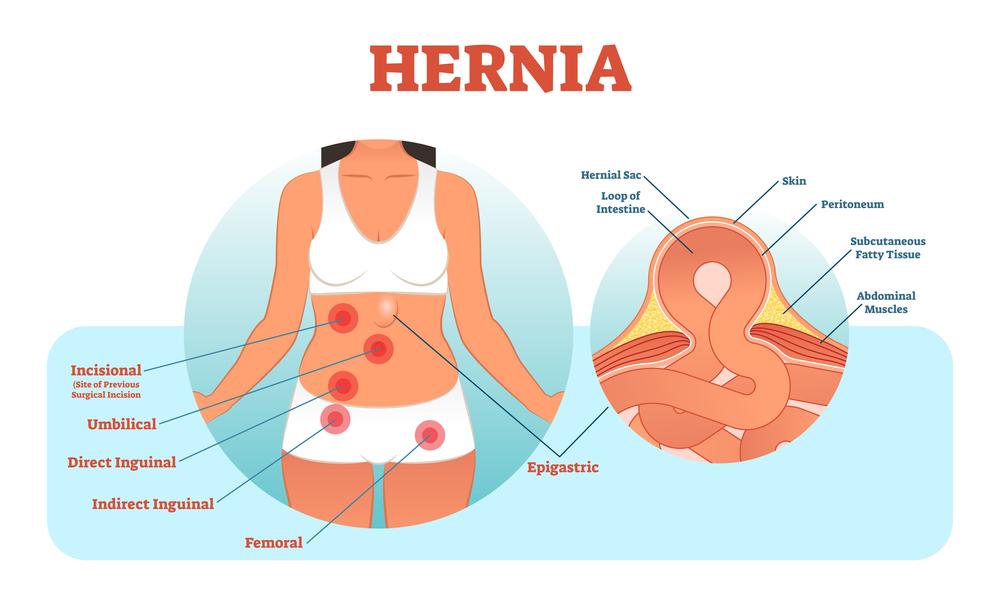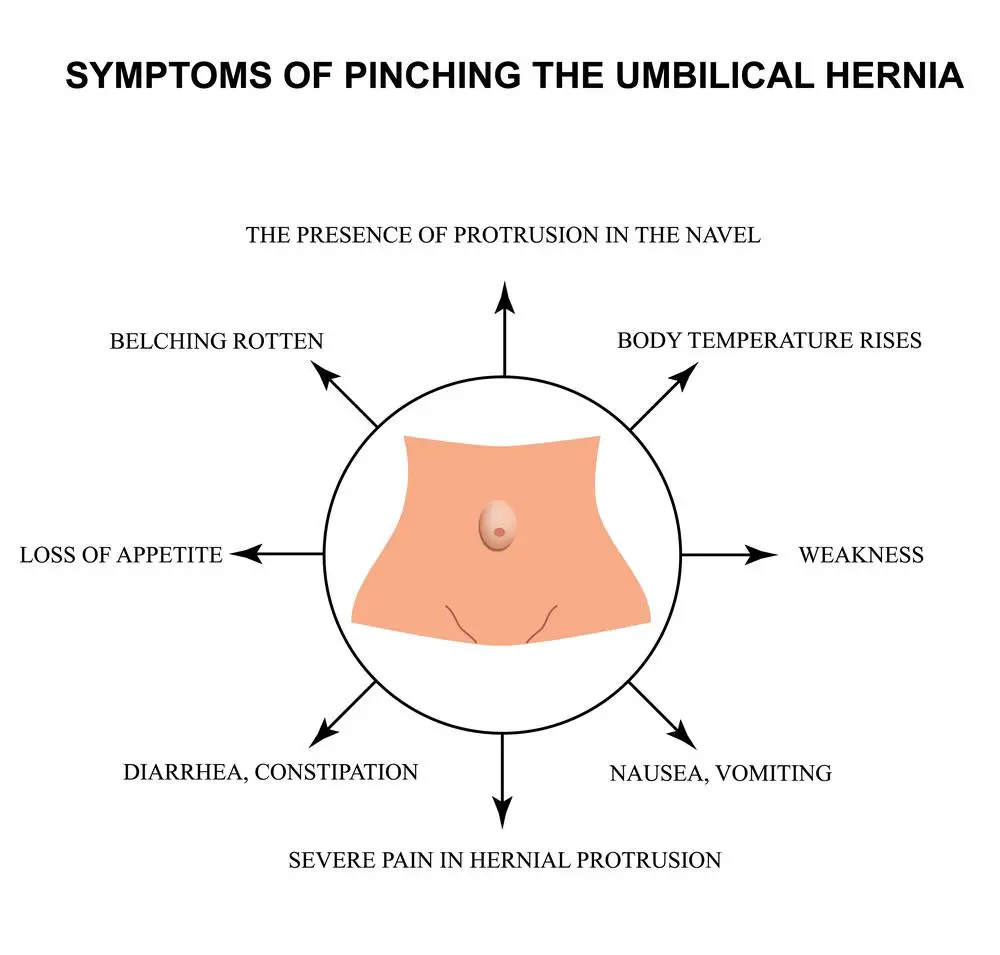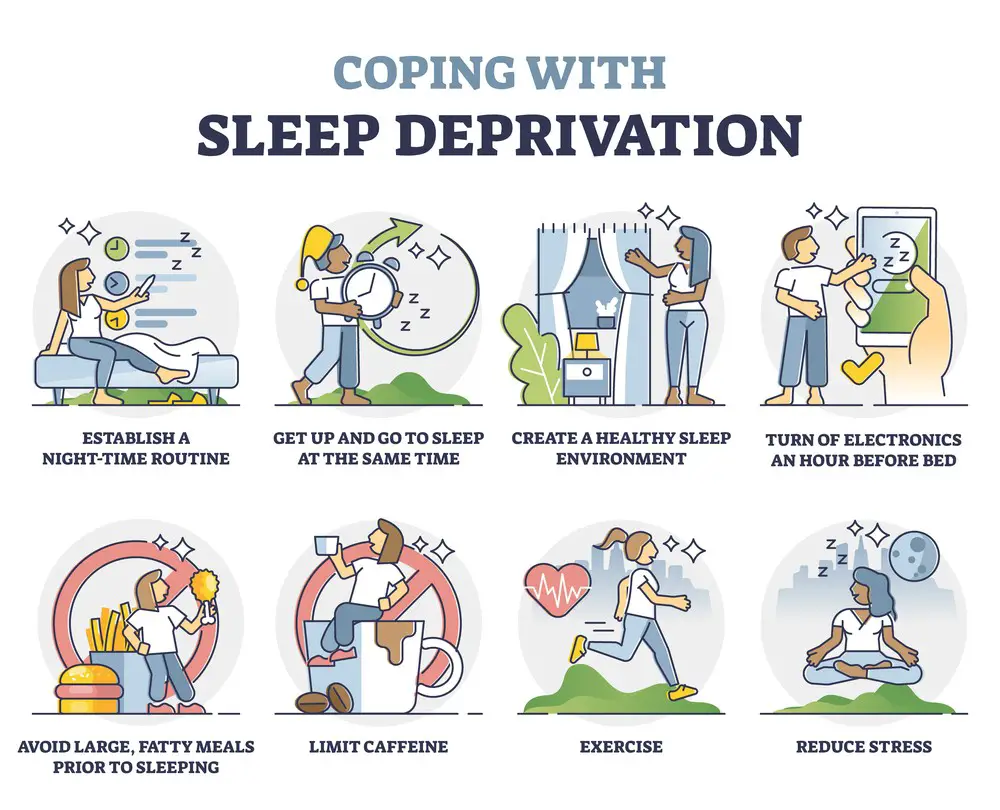As a BetterHelp affiliate, we receive compensation from BetterHelp if you purchase products or services through the links provided
Recovering from umbilical hernia surgery can be a bumpy road, especially when it comes to getting a good night’s sleep. A restful sleep is crucial for proper healing and recovery, but pain and discomfort can make finding a comfortable position challenging. In this article, we will discuss optimal sleeping positions and tips to help you sleep better after umbilical hernia surgery.
Umbilical hernia surgery can be a lifesaver for those suffering from this condition. However, the post-surgery phase can often be rife with complications if proper care isn’t taken. One essential aspect of recovery is ensuring that you get sufficient and restorative sleep. With discomfort, anxiety, and interrupted sleep cycles common after surgery, you need to adjust your routine and take appropriate measures to get the rest your body so desperately needs during this healing process.
Key Takeaways
- Optimal sleeping positions can enhance your comfort and promote healing after umbilical hernia surgery
- Good sleep hygiene, including relaxation techniques and adjusting the temperature, plays a vital role in recovery
- Carefully managing pain, hygiene, and activities after surgery can lead to a smoother and faster healing process

Understanding Hernia Surgery
Umbilical hernia surgery is a common procedure performed to repair a protrusion that occurs near the belly button. This happens when part of the intestine or other abdominal tissue pushes through a weak spot in the abdominal wall. It’s important to know the basics of this surgery so you can have a better understanding of what to expect and how to take care of yourself post-surgery.
Types of Hernia Surgery
There are two main types of hernia surgery: open surgery and laparoscopic surgery. Open surgery involves a larger incision in the abdominal area, while laparoscopic surgery utilizes smaller incisions and a camera to guide the surgeon. The choice of which surgery is best for you will depend on factors like the size of your hernia, your overall health, and your surgeon’s expertise.
Recovery Process
Recovering from umbilical hernia surgery typically takes a few weeks. You’ll likely experience some pain and discomfort around the incision site, and it’s important to follow the post-operative instructions provided by your medical team. This can include:
- Taking prescribed pain medications
- Avoiding heavy lifting and strenuous activities
- Keeping the incision area clean and dry
Getting Back to Sleep
One critical aspect of recovery is learning how to get proper sleep after surgery. Sleep is crucial for your body’s ability to heal, and following some helpful tips can ensure you’re getting the rest you need.
- Sleep elevated: Keeping your head and torso slightly raised can alleviate pressure on the incision and reduce discomfort.
- Sleep on your back: This position allows for even weight distribution and less pressure on the incision site.
- Use pillows for support: Placing pillows under your knees while on your back or between your legs when side sleeping can provide extra comfort.
- Gentle movements: When getting in and out of bed, take it slowly, and try to avoid abrupt movements that can strain your abdominal area.
Remember, the goal is to get the restorative sleep you need while minimizing discomfort and pressure on your healing body. So, don’t hesitate to experiment with different positions and pillow arrangements until you find the most comfortable setup for your needs.
The Post-Surgery Phase
After your umbilical hernia surgery, it’s crucial to focus on your recovery, rest, and healing. Let’s look at several strategies that will help you during this phase.
First things first: finding a comfortable sleeping position is vital. The best way is to sleep flat on your back with your head on a small pillow. This will prevent putting too much pressure on the incision site and allow for comfortable breathing during sleep, ultimately letting your abdominal muscles relax.
In addition to sleeping on your back, you can also try sleeping in an elevated position, as suggested by your doctor. Laying down can be painful, but sleeping elevated can ease this discomfort.
Besides finding the proper sleeping position, be prepared for:
- Swelling and discomfort. It’s normal to feel sore and uncomfortable after the surgery. Using a pillow across your belly might help support your incision area and provide some relief.
- Pain management. Your healthcare team will provide local anesthesia to numb the area and recommend painkillers to help ease the pain during the first few days after surgery.
Remember to take it easy during this time and avoid straining yourself. Gradually resume light activities after one to two weeks following the surgery, but listen to your body and don’t push yourself too hard.
While recovering, it’s crucial to follow your medical team’s advice regarding:
- Wound care: Keep the incision area clean and dry. Watch out for any signs of infection.
- Diet: Eating high-fiber foods and staying hydrated can prevent constipation, which could cause discomfort or even interfere with your healing.
The key takeaway here is to prioritize a comfortable sleeping position and focus on proper recovery, gradually easing back into your daily life. Remember, it’s normal to feel some discomfort, but as long as you follow your healthcare team’s guidance, you’ll be back on track in four to six weeks.
Managing Pain after Hernia Surgery
After umbilical hernia surgery, it’s normal to experience some pain and discomfort around the incision site. However, managing pain is essential for a speedy recovery and proper healing. Here are some tips on how to manage pain after your surgery:
Take prescribed pain medication: Your doctor may prescribe pain medications, such as Tylenol, to help manage your pain. Make sure to take the prescribed medications as directed, and don’t hesitate to contact your doctor if you feel the medication isn’t effective or if you’re experiencing side effects.
Apply ice packs: You can reduce inflammation and numb the painful area by applying ice packs to the incision site. Remember to wrap the ice pack in a cloth or towel to protect your skin and apply it for 15-20 minutes at a time.
Rest and relax: Giving yourself time to rest and heal is crucial. Avoid heavy lifting and strenuous activities that may strain your incision site. Taking breaks and engaging in light activities, such as walking, can help with blood flow and prevent complications.
Wear loose clothing: Wearing tight clothes may irritate the incision site. Opt for loose and comfortable clothing to reduce pressure and chafing on your healing wound.
Monitor your pain levels: Keep track of your pain levels throughout the day so you can adjust your pain management strategies as needed. If your pain continues to worsen or doesn’t improve within a few days, be sure to reach out to your doctor.
By managing your pain effectively, you’ll be better able to sleep and recover after umbilical hernia surgery. Don’t forget to prioritize rest and follow your doctor’s recommendations along the way.
Infection and Complication
After an umbilical hernia surgery, it’s normal to feel some discomfort and experience a bit of a learning curve when it comes to sleeping. However, it’s crucial to keep an eye out for signs of infection and complications to ensure a smooth recovery process.
The incision site is the most common place for infection to develop. To avoid this, make sure to clean the area gently with soap and water and keep it dry. If you notice any redness, swelling, or increased pain, this could be a sign of an infection, and you should contact your doctor immediately.
In some cases, you may develop a fever after surgery. A low-grade fever is generally not a cause for concern; however, if it persists or rises above 101°F (38.3°C), this may indicate an infection or complication, and you should seek medical attention.
Aside from infection, other potential complications may occur, such as:
- Difficulty breathing or chest pain: This could signal a more serious issue and need immediate medical attention.
- Difficulty passing urine: This may be due to surgical swelling or pain medications and often resolves on its own. If it persists, contact your healthcare provider.
- Severe nausea and vomiting: Although some postoperative nausea is common, if it worsens or lasts more than a day after surgery, consult your doctor.
When trying to get a good night’s sleep after umbilical hernia surgery, remember to:
- Sleep in an elevated position to reduce pain and facilitate healing.
- Follow your doctor’s instructions on pain medication and wound care.
- Stay vigilant for signs of infection or complications, and contact your healthcare provider if anything seems unusual.
Key takeaway: By monitoring your recovery and following your doctor’s advice, you can minimize the risk of infection and complications, making it easier to find comfort during sleep after umbilical hernia surgery.
The Importance of Diet and Hydration
After undergoing umbilical hernia surgery, your recovery must pay attention to your diet and hydration. A well-balanced diet and proper hydration can help expedite the healing process while also ensuring that you feel comfortable and energetic throughout your recovery.
Stay Hydrated: Aim to drink at least 6 to 8 cups of fluid each day to stay adequately hydrated. You can consume water, juice, or any other healthy beverage that you enjoy. Staying well-hydrated not only aids in digestion but also helps flush out toxins from your body, enabling a smoother recovery.
Choose Easy-to-Digest Foods: In the initial days following surgery, ease back into your diet by starting with liquids and small meals. This can help your digestive system gradually adapt to eating solid foods again. Soups, broths, and yogurt are some great options to incorporate in the early stages.
Listen to Your Appetite: As you recover, it’s normal for your appetite to fluctuate. Don’t force yourself to eat if you’re not hungry, but also make sure to consume enough nutrients to support your healing process. Gradually introduce regular meals back into your diet as your appetite returns to normal.
Incorporate Nutrient-Dense Foods: To promote healing and overall well-being, include nutrient-rich foods in your diet, such as lean proteins, whole grains, fruits, and vegetables. These foods provide essential vitamins, minerals, and nutrients that can assist in repairing the tissues affected by surgery and bolster your immune system.
Ensure you stay on track with your healing by focusing on these critical aspects of your diet and hydration. It might seem like a small part of the recovery process. Still, proper nutrition and sufficient fluid intake can make a significant difference in your overall comfort and progress post-surgery.
 Maintaining Hygiene for Healing
Maintaining Hygiene for Healing
Practicing good hygiene is essential for a speedy recovery after umbilical hernia surgery. Keep your incision clean and dry to ward off infections and promote healing. Here are some tips to help you maintain proper hygiene during your recovery period:
- Keep the incision clean: Gently clean the area around your incision with mild soap and water. Ensure that you rinse it well and do not scrub the incision, as this could irritate it.
- Avoid soaking the incision: While baths might sound tempting, stick to showers during the initial healing process. Do not submerge your incision in water, as it may introduce bacteria or slow down the healing process.
- Change dressings regularly: Monitor your dressings and replace them as instructed by your doctor. This keeps the incision clean and prevents the buildup of bacteria.
- Be mindful of stitches: Your stitches or surgical glue will hold the incision together. Avoid picking at, tugging, or scratching them to prevent further damage.
- Dress comfortably: Wear loose-fitting clothes that do not put pressure on your incision. Tight garments may irritate the area and slow down the healing process.
In addition to maintaining good hygiene around the incision, it’s essential to practice general hygiene habits. These include washing your hands frequently, maintaining clean living spaces, and avoiding excessive physical activity that could cause sweating around the incision area.
Remember, your body’s healing process is significantly affected by your hygiene practices. Taking care of the incision site and keeping your surroundings clean will support your recovery journey after umbilical hernia surgery.
Sleeping Position
After umbilical hernia surgery, finding a comfortable sleeping position is essential to ensure a restful recovery. Let’s dive into some useful tips and strategies to help you find the most suitable sleeping positions.
Firstly, sleeping on your back is often recommended as the best position for your recovery. Laying flat on your back with your head on a small pillow helps evenly distribute your body weight, reducing pressure on the incision site and ensuring that your abdominal muscles are relaxed. To provide additional support for your lower back, try placing another pillow under your knees.
Side sleeping may be another good option if you find sleeping on your back uncomfortable. Start by slowly laying down on one side, making sure your torso and head are in a comfortable spot. Then, lift your legs onto the bed. You can also use a pillow between your knees for extra support and comfort. However, it’s important not to sleep on the same side as the surgery to avoid drainage issues with the hernia repair site.
Now, let’s talk about some helpful tools and accessories that can make finding your perfect sleeping position even easier:
- Wedge pillows: These can be especially helpful if you need to sleep in an elevated position since they provide extra support to your head and upper torso. Many doctors suggest sleeping with your upper body slightly elevated, as it can help reduce post-surgery discomfort.
- Adjustable beds: These beds allow you to adjust the angle of your head or legs, making it easier to find the most comfortable position for your specific situation.
Remember, it’s essential to listen to your body during your recovery. Experiment with these different sleeping positions and tools to discover what works best for you, and be sure to follow your doctor’s recommendations for proper post-surgery care. Happy healing!
Physical Activities after Surgery
After your umbilical hernia surgery, it’s essential to gradually ease back into physical activities to promote healing and prevent complications. Don’t worry; we’ve got you covered with some tips and guidelines to ensure a smooth transition back to your everyday life.
First and foremost, listen to your body. You might experience some pain and discomfort during the initial days following surgery. Take it easy and avoid doing too much too soon. It’s normal to feel tired, so it’s okay to rest when you need to.
Walking is a great, low-impact exercise to start with, as it encourages blood flow and supports the healing process. Begin with short, gentle walks around your home and gradually increase the distance and duration as you feel more comfortable.
While it’s important to remain active during your recovery, be mindful of your lifting limitations. Avoid lifting anything heavier than 10 pounds until your doctor gives you the green light. Overexertion can cause strain on your abdominal muscles and jeopardize your recovery.
When it comes to resuming your normal activities, let your body be your guide. It’s perfectly fine to return to activities like dressing, cooking, or working on a computer when you feel ready. However, make sure to take breaks and prioritize your comfort and well-being during this time.
If your job involves physical labor, it’s crucial to consult your doctor before returning to work post-surgery. They’ll provide you with specific guidelines based on your health and the nature of your job. It’s better to be safe than sorry!
Here are some key takeaways to remember regarding physical activities after umbilical hernia surgery:
- Start with gentle, low-impact exercises like walking
- Gradually increase activity levels as your body allows
- Avoid lifting heavy objects and follow your doctor’s guidance
- Listen to your body, and don’t hesitate to rest when needed
- Consult your doctor before resuming physically demanding work
By following these recommendations, you’ll be on the right path to a healthy and smooth recovery. Remember to give your body the time and rest it requires to fully heal. Happy healing!
Preventing Constipation
After umbilical hernia surgery, it is common for patients to experience constipation. To prevent this discomfort, incorporate these easy alterations into your daily routine:
- Stay hydrated: Drinking plenty of water is crucial in keeping your bowel movements regular. Aim to consume at least eight glasses per day.
- Fiber-rich diet: Consume foods that are high in fiber, as they help to soften your stool and make it easier to pass. Examples include fruits, vegetables, whole grains, and legumes.
- Gentle exercise: Go for short walks or try other mild activities to boost your circulation and promote regular bowel movements. Always consult your doctor before undertaking any exercise post-surgery.
It’s important to avoid straining during bowel movements, as this can put undue pressure on your incision site. Here are a few additional tips that may help ease constipation:
- Utilize an over-the-counter stool softener or laxative as needed, but only as directed by your healthcare provider.
- Establish a regular bathroom schedule. This will give your body a set time each day to pass bowel movements, making it easier to maintain regularity.
- Consider placing a small stool under your feet while sitting on the toilet. This position can help ease the strain on your abdominal muscles.
Incorporating these habits into your daily routine can be vital in preventing constipation after umbilical hernia surgery. Remember, always consult your doctor for personalized advice and follow their recommendations for a smooth and comfortable recovery.
Avoiding Alcohol, Caffeine, and Medications
While you’re recovering from umbilical hernia surgery, your body needs time to heal and adjust to the changes. There are a few substances you should avoid to ensure a smoother recovery experience. In this section, we’ll talk about some substances you need to be mindful of during this critical period of recovery.
Alcohol and caffeinated beverages are both known to disrupt the sleep cycle. Refrain from consuming alcohol, as it could slow down your healing process. On the other hand, caffeine can keep you awake, increasing the risk of poor-quality sleep. Keeping alcohol and caffeine at bay can significantly improve your chances of getting a good night’s sleep, which is crucial for your recovery.
Moreover, be cautious with medications. Some medicines, such as blood thinners, can have adverse effects on post-surgery recovery, potentially increasing the risk of complications. Make sure to consult your doctor about any medications you’re taking, as they can provide specific advice tailored to your individual health history and needs.
Here are some tips to follow:
- Stick to non-alcoholic beverages like water, herbal tea, or natural fruit juices during your recovery period.
- Opt for decaffeinated alternatives like decaf coffee or tea, especially during the evening hours.
- Be sure to follow your doctor’s guidance regarding any medications, particularly blood thinners.
- Keep a list of all the medications you’re taking, and ask your healthcare provider about any potential interactions or side effects.
By being aware of these substances and being vigilant in avoiding them during your recovery, you can promote a better healing process. Sleep is essential for any surgery recovery, and steering clear of alcohol, caffeine, and potentially harmful medications will help you on your journey toward improved health and well-being. Remember, your body needs time and proper rest to get back on track after surgery, so make sure to give it the care and attention it deserves.
 When to Return to Work or Events
When to Return to Work or Events
After an umbilical hernia surgery, it is natural to wonder when you can go back to work or attend events again. Worry not, as this brief guide will provide you with some insights to help you plan accordingly.
First and foremost, it is crucial to listen to your body. Every individual’s recovery time varies, and you should not push yourself beyond your limits. Most people can return to work within 2 to 3 days after surgery, especially if their jobs do not demand heavy lifting or strenuous activity.
However, if your occupation requires more physical effort, you may need to take 4 to 6 weeks off to ensure proper healing of your incision site and avoid complications. Discuss your work situation with your healthcare provider to determine the appropriate time for you to go back to your daily tasks.
When it comes to attending events, be it social gatherings or family functions, you should also assess how comfortable you feel in such settings. Consider the following tips:
- Take it slow: Ease into events gradually, starting with smaller and less crowded gatherings at first. As your energy levels and comfort increase, you can attend larger events.
- Stay mindful of your posture: Avoid standing for extended periods, and find a comfortable chair or seating area to rest when needed.
- Be cautious with food: Stick to bland, low-fat foods like plain rice, broiled chicken, toast, and yogurt if your stomach is upset at events where food is served.
Ultimately, the decision of when to return to work or attend events depends on your body’s recovery and your overall comfort level. Remember to communicate with your healthcare provider and follow their recommendations as you navigate through your healing process.
 Ensuring Mental Health
Ensuring Mental Health
Recovering from umbilical hernia surgery can be challenging, and maintaining good mental health is as crucial as taking care of your physical health. Here are a few friendly suggestions to ensure you stay positive and mentally healthy during your recovery:
Try relaxation techniques: Incorporating relaxation techniques into your daily routine can help reduce stress and anxiety. Deep breathing exercises, meditation, and progressive muscle relaxation are just a few methods you can try. Spend around 10-15 minutes each day to calm your mind and ease any post-operative concerns.
Create a positive sleep environment: Your sleeping space plays an essential role in your mental well-being. Make your bedroom an inviting and comfortable sanctuary with dim lighting, relaxing artwork, and cozy bedding. Maintain a clutter-free environment, and consider the use of essential oils, such as lavender, to promote relaxation.
Stay connected with friends and family: Loneliness and isolation can lead to feelings of sadness during your recovery. Reach out to your loved ones and keep them updated on your progress. Engage in virtual calls or texts to stay connected and receive emotional support when needed.
Set realistic recovery goals: Expecting too much too soon can lead to feelings of frustration and disappointment. Remember, everyone’s recovery journey is unique. Set achievable goals with your doctor’s guidance and celebrate each milestone, no matter how small.
Distract yourself: Keep your mind busy with activities you enjoy, such as reading, listening to music, or watching your favorite TV shows. Focusing on positive experiences helps to shift your attention away from any discomfort or anxiety related to your surgery.
Remember, mental health plays a significant role in the overall healing process. By following the tips mentioned, you can ensure you stay emotionally strong as you recover from your umbilical hernia surgery.
 Managing Sleep Disorders after Surgery
Managing Sleep Disorders after Surgery
After an umbilical hernia surgery, you may experience sleep disorders such as insomnia or sleep disturbances. It’s essential to address these issues to ensure a smooth recovery. Here are some tips to manage sleep disorders after surgery:
1. Sleep in an elevated position – Sleeping with your head and chest elevated can alleviate discomfort and help you sleep better. You can use pillows or a wedge to keep yourself propped up.
2. Maintain a consistent sleep schedule – Try to go to bed and wake up at the same time every day to regulate your sleep pattern. This helps your body get used to a routine, making it easier to fall asleep.
3. Create a sleep-friendly environment – Your bedroom should be comfortable and conducive to rest. Make sure it is dark, quiet, and at a cool temperature. You can use blackout curtains, earplugs, or a white noise machine to minimize disturbances.
4. Practice relaxation techniques – Deep breathing exercises, progressive muscle relaxation, and meditation can help calm your mind and prepare your body for sleep. These practices can reduce stress and anxiety, improving your chances of getting a good night’s rest.
5. Limit the intake of stimulants – Avoid consuming caffeine, nicotine, and alcohol before bedtime as these can interfere with your sleep. Instead, opt for calming beverages like herbal tea or warm milk to promote relaxation.
6. Pay attention to your sleep position – If you’re experiencing pain or discomfort, experiment with different sleep positions to find the most comfortable one. Placing a pillow between your knees, sleeping on your non-operative side, or hugging a body pillow can give you the support you need.
Remember, proper sleep is crucial to your recovery from umbilical hernia surgery. By following the tips above and being mindful of any sleep disturbances, you can promote better rest and healing. Don’t hesitate to consult your healthcare provider if you continue to experience sleep disorders after surgery.
Getting the Best of Your Mattress
When recovering from umbilical hernia surgery, it’s essential to prioritize a good night’s sleep, and your mattress plays a crucial role. Here are a few tips to help you make the most of your mattress during this period.
To start, consider investing in an adjustable bed or a mattress with a built-in recliner feature. These types of beds allow you to elevate your upper body, helping reduce pressure on your incision as well as making it easier for you to breathe. If an adjustable bed isn’t an option, you can achieve a similar effect by using pillows to prop yourself up.
If you’re a side sleeper, you might need to switch things up a bit. Sleeping on your back is generally the best position for recovery as it helps keep your abdominal muscles relaxed and reduces pressure on the incision site. Try using a small pillow beneath your head for support. However, avoid sleeping on your stomach or directly on your sides to prevent drainage issues with the hernia repair site.
Here are some additional strategies for getting comfortable on your mattress after surgery:
- Opt for a medium-firm mattress to provide a balance of support and comfort for your body while you recover.
- Use a body pillow or a wedge pillow to create extra support and elevation where needed.
- Use a side sleeper pillow between your knees to make lying on your side more comfortable if necessary but remember to avoid applying direct pressure to the surgery site.
- Customize your sleep setup with additional pillows, blankets or mattress toppers to enhance your comfort.
In conclusion, taking the time to optimize your mattress situation can significantly impact your overall comfort during your recovery period. Focus on finding the best mix of support and elevation that allows you to sleep peacefully and rest your body while it heals. Remember, always consult your doctor if you have concerns about your sleep or your recovery progress.
Deep Breathing and Abdominal Muscles
During your recovery from umbilical hernia surgery, it’s important to practice deep breathing exercises to relax your body and abdominal muscles. This can reduce discomfort and tension around the incision area. Here are some tips to help you practice deep breathing after your surgery.
- First, find a quiet and comfortable spot where you can relax without any distractions. Sit or lie down in a position where your back is supported but your abdominal muscles are relaxed.
- Inhale slowly through your nose, allowing your chest and stomach to rise. You should feel your abdominal muscles gently expanding as they fill with air.
- Hold your breath for a couple of seconds, then exhale slowly and completely through your mouth. Make sure air is fully expelled to prevent any build-up of pressure in your abdominal area.
- Repeat this process for a few minutes, focusing on maintaining a slow and steady breathing pattern.
Practicing deep breathing can help you maintain relaxed abdominal muscles, which is essential for healing and preventing strain on your incision site. By incorporating these simple techniques, you can better manage your discomfort and accelerate your recovery. Don’t worry if it takes some time to get used to this – even a few rounds of deep breathing can make a big difference.
Another crucial aspect of your recovery includes avoiding unnecessary strain on the muscles around the umbilical hernia repair site. Follow these tips to protect your abdominal muscles and promote proper healing:
- Hold a pillow tightly against your abdomen when bending or moving to provide additional support.
- When getting in and out of bed, enlist the help of a caregiver or use proper movement mechanics to minimize the pressure on your healing site.
- During sleep, maintain a flat position on your back with a small pillow supporting your head. This will allow your abdominal muscles to stay relaxed and avoid pressure on the healing area.
Remember, your ultimate goal is to allow your body to heal properly after umbilical hernia surgery. By practicing deep breathing and protecting your abdominal muscles, you’re taking the proper steps towards a restful and speedy recovery.
 Stages of Sleep and Healthy Sleep
Stages of Sleep and Healthy Sleep
Sleep plays a crucial role in maintaining your overall well-being, especially after undergoing umbilical hernia surgery. There are four stages of sleep, and reaching each one is essential for a healthy sleep cycle.
When you first drift off, you enter stage 1. This light sleep stage serves as a transition between wakefulness and deeper sleep stages. Pay attention to creating a relaxing bedtime environment to help initiate this stage.
Next in line is stage 2, another phase of light sleep. Your muscles relax and your heart rate slows down, allowing your body to unwind further. By ensuring your sleeping area is free of distractions, you’ll find ease in reaching stage 2.
Entering stage 3 means you’ve reached deep sleep. This is when your body truly starts to restore your energy levels. It’s important to prioritize comfort during this critical stage. Sleeping on your back with a pillow under your knees can enhance your comfort after hernia surgery.
Lastly, stage 4 is the REM (rapid eye movement) stage. This is crucial for processing emotions and mental restoration. Strive for at least 7-8 hours of sleep to reach this final stage.
To promote healthy sleep:
- Keep your bedroom cool and dark
- Stick to a consistent sleep schedule
- Limit exposure to screens before bedtime
- Engage in relaxation techniques like deep breathing or meditation
Remember, your body needs time to heal after surgery. By prioritizing healthy sleep habits and understanding the stages of sleep, you’ll be on your way to a restful and speedy recovery!
Alleviating Discomforts
After umbilical hernia surgery, it’s normal for you to experience some discomfort, such as pain and stiffness, numbness, bruising, swelling, or even groin pain. Don’t worry; there are ways to help alleviate these discomforts and make your recovery more comfortable.
Firstly, try to maintain an elevated sleeping position. This can help reduce pain and swelling, as laying down flat on your back or sides might cause more discomfort. Use pillows to prop yourself up and keep your head elevated. If you find this position uncomfortable, you can also try sleeping on your side with a pillow between your knees for extra support.
Next, managing pain is crucial for a restful recovery. Your doctor might have already prescribed some pain-relief medications, so take them as instructed. Don’t hesitate to contact your healthcare professional if you need further guidance or feel that the current pain management plan isn’t working for you.
Likewise, dealing with numbness and bruising is essential. Applying ice packs wrapped in a cloth to the affected area can reduce swelling and numbness, but consult with your doctor before doing this. Generally, ice packs can be applied for up to 20 minutes at a time, with at least a 20-minute break before reapplying.
Moreover, it’s important to remember that light movement and activity are beneficial for your recovery. This helps boost circulation, reducing stiffness and promoting healing. Gentle walking or engaging in mild exercises, as approved by your doctor, can go a long way in alleviating discomforts during your recovery period.
Lastly, remember to wear loose, comfortable clothing that doesn’t put any pressure on the incision site. Tight clothing may increase pain and slow down the healing process, so choose clothes that allow your incision area to breathe and remain irritation-free.
Keep in mind that these tips are meant to help you manage your discomfort—your primary resource should always be your healthcare provider. Communicate with them regularly to ensure that your recovery is on track and that any pain or discomfort you experience is being managed effectively.
Recovery Time and Process
After undergoing umbilical hernia surgery, you might be curious about how long it takes to recover and what the recovery process involves.
Recovery time varies for each individual. Typically, expect 1-2 weeks of taking it easy. Give your body time to heal, and avoid lifting anything heavier than 10 pounds until your doctor approves. Rest when you feel tired, but don’t hesitate to return to normal activities as you start feeling better gradually.
In the early stages of recovery, consider trying these tips:
- Walk regularly: Walking is a gentle exercise that promotes circulation and wound healing. Take short walks multiple times a day, gradually increasing distance as you feel more comfortable.
- Manage pain: Pain is a normal part of the recovery process. Use prescribed or over-the-counter pain relief medication as advised by your healthcare provider. Icing the affected area may also provide relief.
- Wear comfortable, loose-fitting clothing: Tight clothes can cause irritation and discomfort at the surgery site. Choose clothing that allows for easy movement and reduces pressure on your abdomen.
During the recovery process, sleep plays a crucial role in helping your body heal and regain strength after umbilical hernia surgery. Experiment with different sleeping positions to minimize discomfort and protect the surgical area. The best sleeping position is usually lying flat on your back, with a small pillow supporting your head. This allows your abdominal muscles to relax and prevents excessive pressure on the incision site.
Remember that everyone’s recovery is different, and it’s essential to listen to your body. Reach out to your healthcare provider for guidance if you have concerns about your recovery progress or need personalized advice.
Stay patient and gentle with yourself during this process. Embrace the power of rest and self-care as you navigate the post-surgery recovery journey.
Be Aware of Serious Indications
After umbilical hernia surgery, it’s essential to monitor your recovery and keep an eye out for any severe indications that could signal complications. In this section, we’ll discuss some of the key warning signs to watch for during the healing process.
Fever: Experiencing a fever after surgery can be a sign of infection. If your temperature reaches 100.4°F (38°C) or higher, get in touch with your healthcare provider. They will guide how to proceed and may prescribe antibiotics to treat the infection.
Vomiting: It’s not unusual to feel a bit of nausea after surgery, but persistent vomiting could be a cause for concern. If you’re unable to keep down any fluids or food, reach out to your doctor. They can help determine the cause and recommend appropriate treatment options.
Blood Clot: Although rare, blood clots can develop following surgery. Signs of a potential blood clot include swelling, redness, and pain in the affected area, usually your legs. If you notice any of these symptoms, contact your healthcare provider immediately. Early detection and treatment are critical.
In addition to these primary indicators, be sure to watch for other concerning symptoms, such as:
- Excessive pain or discomfort around the incision site
- Increased redness, swelling, or drainage from the wound
- Difficulty breathing or chest pain
Remember, you know your body best. If something feels off or you’re worried about a particular symptom, don’t hesitate to reach out to your healthcare team. They’re here to support you through your recovery journey.
Maintaining Support and Education
During your recovery from umbilical hernia surgery, it’s essential to maintain support and education to ensure a smooth and comfortable healing process. Establishing a good relationship with your healthcare provider helps tremendously, as they can provide guidance and answer any questions you may have throughout your recovery journey.
First and foremost, don’t hesitate to contact your healthcare provider if you have questions or concerns about your surgery, medications, or post-operative care. They can provide valuable information and advice, as well as address any issues you may be experiencing.
In addition to your healthcare provider, seek support from family and friends who can help you around the house, accompany you to medical appointments, and provide emotional support. It’s crucial to prioritize your well-being and accept assistance when needed.
To educate yourself, consider researching various aspects of your condition and the surgical procedure. This knowledge can empower you to make informed decisions and appropriately care for yourself during recovery. Some topics you may want to explore include potential complications, tips for pain management, and dietary recommendations.
Here are a few tips to ensure your support and education efforts are effective:
- Stay informed: Keep up-to-date with the latest information about umbilical hernia surgery and recovery. This includes subscribing to newsletters, joining online forums, and attending workshops or seminars related to your condition.
- Ask questions: Don’t be afraid to ask your healthcare provider any questions you may have – no question is too small or insignificant. This will also help you feel more in control and confident about your recovery.
- Keep a journal: Document your symptoms, any side effects from medication, and any concerns or questions you may have. This can serve as an invaluable reference when speaking with your healthcare provider.
Remember that maintaining support and education throughout your recovery journey is vital for your overall well-being. It will not only help you achieve a smoother recovery but also provide you with the tools to manage your condition better and prevent future complications.
Frequently Asked Questions
How long should I avoid lying on my stomach after umbilical hernia surgery?
After umbilical hernia surgery, it is essential to give your body enough time to heal. Typically, it would be best if you avoided lying on your stomach for at least two to four weeks. However, since each person’s recovery time varies, you should consider consulting your surgeon for more personalized advice.
What sleeping positions are recommended after umbilical hernia surgery?
The best sleeping position after umbilical hernia surgery is to sleep flat on your back with your head on a small pillow. This prevents too much pressure on the incision site and allows for comfortable breathing. Your abdominal muscles should be relaxed, and sleeping on your back makes this more likely.
Can I use pillows for support when sleeping after hernia surgery?
Yes, you can use pillows to help support you while sleeping after hernia surgery. Placing a pillow under your knees can alleviate pressure on your lower back, making it more comfortable to sleep on your back. You could also try elevating your upper body with pillows or an adjustable bed, which may help to reduce pain and discomfort.
How soon after surgery can I resume regular sleep habits?
The time it takes to return to your regular sleep habits after umbilical hernia surgery varies from person to person. Factors to consider include the complexity of the surgery, your body’s healing rate, and how well you manage your pain. It’s essential to listen to your body and consult your surgeon to make sure you’re on track and to avoid any complications.
Are there any sleep aids that are safe to use after umbilical hernia surgery?
Before using any sleep aids after surgery, it’s crucial to consult with your surgeon or healthcare provider. They will determine whether a specific sleep aid is safe for you based on factors such as your medical history and current medications. Some over-the-counter sleep aids or natural remedies may be approved, while others may not be recommended.
How can I manage discomfort while sleeping post-surgery?
To manage discomfort while sleeping after umbilical hernia surgery, practice good sleep hygiene. Adjust the room temperature to be between 60-67 degrees Fahrenheit, listen to relaxing music or soundscapes, and engage in low-stress activities to calm and soothe your mind. These efforts will help your body relax, making it easier for you to get the rest you need for proper healing and recovery.
Key takeaway: Prioritize your comfort and be patient with your body as it heals from umbilical hernia surgery. Consult your surgeon or healthcare provider for specific advice and recommendations, and be diligent in creating a restful sleep environment.
- 3 Ways Wearing a Hat Can Help Lower Your Stress Levels - April 19, 2025
- Breaking the Silence: Why Men’s Mental Health Matters More Than Ever - April 15, 2025
- How to Transform a Home’s Patio Space into a Relaxing Space - March 23, 2025
This site contains affiliate links to products. We will receive a commission for purchases made through these links.


 Maintaining Hygiene for Healing
Maintaining Hygiene for Healing When to Return to Work or Events
When to Return to Work or Events Ensuring Mental Health
Ensuring Mental Health Managing Sleep Disorders after Surgery
Managing Sleep Disorders after Surgery Stages of Sleep and Healthy Sleep
Stages of Sleep and Healthy Sleep
